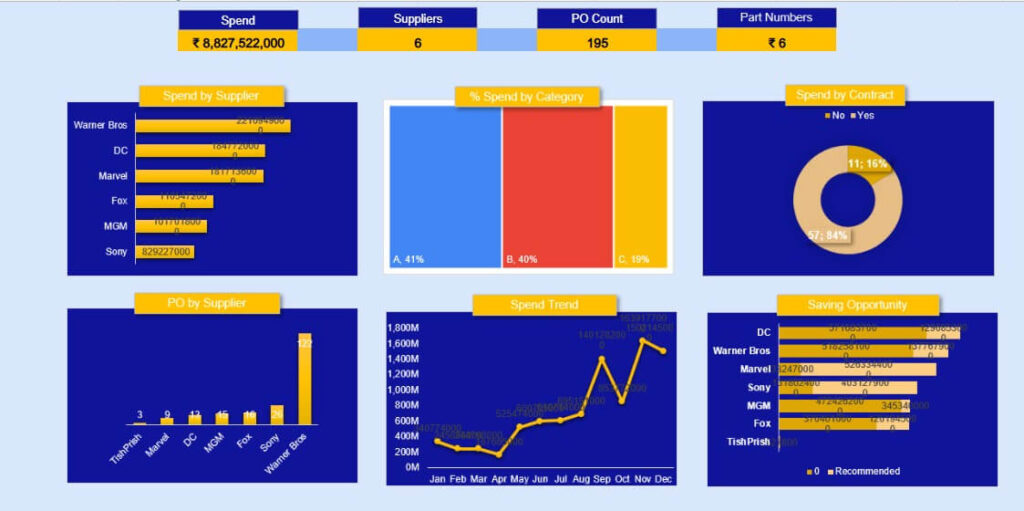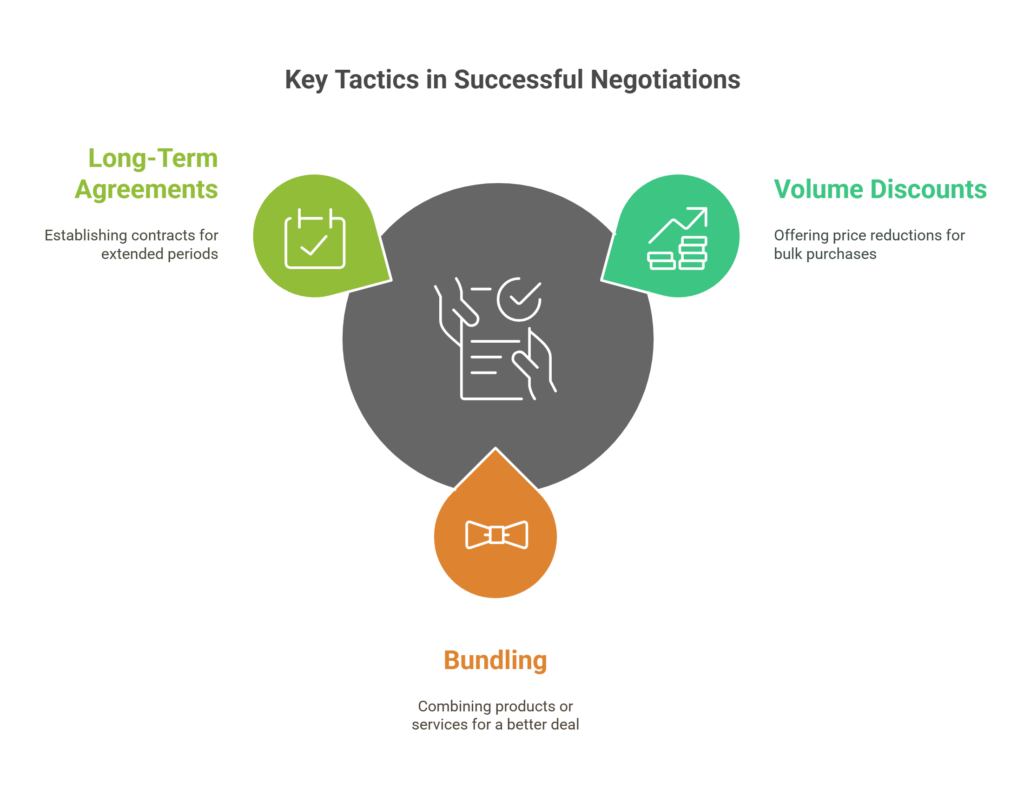In today’s competitive business landscape, procurement teams are expected to deliver more than just savings. They are tasked with finding innovative solutions that drive efficiency, reduce costs, and build strategic, long-term supplier relationships. At Indirectix, we understand that the path to significant procurement savings requires a comprehensive and tailored approach. That’s why we have developed the “INSPIRE” methodology, a unique framework designed to optimize procurement processes and accelerate savings for our clients.
The INSPIRE methodology, which stands for:

- I: Insightful Spend Analysis
- N: Nurturing Supplier Segmentation
- S: Strategic Negotiation
- P: Process Optimization with E-Procurement Solutions
- I: Integrated Supplier Performance Management
- R: Risk Management and Compliance
- E: Effective Continuous Improvement
Our proprietary approach integrates these core principles to deliver faster, sustainable savings. Each pillar of INSPIRE plays a vital role in creating an end-to-end procurement process that reduces inefficiencies, enhances supplier relationships, and maximizes long-term value. In this blog, we will explore how procurement teams can apply the INSPIRE methodology to unlock significant savings and drive continuous improvement.
1. Insightful Spend Analysis: Laying the Groundwork for Savings
The first step toward procurement savings is understanding where your money is being spent. At Indirectix, we emphasize Insightful Spend Analysis as a key pillar of the INSPIRE methodology. Spend analysis is the foundation of any cost-saving initiative, as it provides transparency into your organization’s procurement landscape.
Through insightful spend analysis, procurement teams can:
- Identify cost-saving opportunities: Gain visibility into high-spend categories and uncover inefficiencies in the procurement process. You may discover that consolidating purchases or eliminating redundant suppliers could result in substantial savings.
- Categorize spending patterns: Break down procurement expenses into categories and subcategories to identify trends, opportunities for volume discounts, or bundling opportunities.
- Spot maverick spending: Identify instances where purchases are being made outside of preferred suppliers or contracts. This can highlight areas where compliance enforcement and better control measures are needed.
By leveraging detailed spend data, organizations can make informed, data-driven decisions that directly contribute to procurement savings.

2. Nurturing Supplier Segmentation: Aligning Strategy with Value
Not all suppliers are equal, and not all require the same level of attention. With Nurturing Supplier Segmentation, the INSPIRE methodology enables procurement teams to categorize suppliers based on their strategic value to the business. This allows teams to apply customized strategies for each supplier, ensuring the best use of resources and optimizing savings.
The segmentation process includes:
- Categorizing suppliers: Divide suppliers into strategic (high value and high volume) and transactional (low value and low volume) categories. This segmentation ensures that procurement teams prioritize high-value suppliers while simplifying processes for less critical suppliers.
- Tailored supplier engagement: For strategic suppliers, focus on building strong, long-term relationships, exploring innovation opportunities, and negotiating favorable terms. For transactional suppliers, streamline processes, negotiate for better pricing, and reduce the administrative burden.
- Continuous evaluation: Supplier segmentation is not a one-time activity. Regularly reevaluate your suppliers to ensure that they continue to meet performance expectations and align with your business needs.
By aligning procurement strategies to the specific needs of different supplier categories, businesses can optimize their supplier base and maximize savings opportunities.
3. Strategic Negotiation: Securing Optimal Deals
Effective negotiation is central to procurement savings. Under the INSPIRE methodology, Strategic Negotiation is designed to go beyond just pushing for lower prices. It’s about leveraging strategic techniques to maximize value in every supplier relationship.
Key negotiation strategies in the INSPIRE framework include:
- Volume-based agreements: Consolidating purchases to negotiate better terms, such as volume discounts, more favorable pricing, or value-added services.
- Bundling and cross-functional deals: Combining categories or services that may have been previously sourced independently, creating opportunities for additional discounts and reducing administrative efforts.
- Contract flexibility: Negotiating favorable terms that allow for flexibility in delivery schedules, price adjustments, or performance guarantees that benefit both parties.
- Competitive bidding: Encouraging multiple suppliers to participate in a bidding process to foster competition, ensuring better pricing and terms.

Strategic negotiation is about building win-win agreements that not only result in cost savings but also help to foster strong, long-lasting supplier relationships.
4. Process Optimization with E-Procurement Solutions: Streamlining Operations
In today’s digital world, manual processes in procurement can create unnecessary inefficiencies and increase costs. Process Optimization with E-Procurement Solutions is an essential pillar in the INSPIRE methodology. By embracing technology, procurement teams can streamline operations, reduce errors, and achieve greater transparency.
Some key components of e-procurement include:
- Automating procurement tasks: Implementing e-procurement systems that automate the entire procurement cycle, from requisition to purchase order to invoicing. This reduces administrative overhead and allows procurement teams to focus on strategic activities.
- Supplier portals: Providing suppliers with direct access to a centralized procurement platform where they can view and respond to orders, track deliveries, and manage invoicing. This fosters collaboration and enhances communication with suppliers.
- Centralized data and reporting: E-procurement platforms collect and store procurement data, making it easier to analyze spending patterns, track supplier performance, and ensure compliance with procurement policies.
- Supplier relationship management: Using technology to monitor and evaluate supplier performance, ensuring that suppliers continue to meet agreed-upon terms and service levels.
By implementing e-procurement solutions, procurement teams can drive efficiency, reduce manual errors, and ensure greater compliance, all of which contribute to long-term savings.
5. Integrated Supplier Performance Management: Maintaining Value Over Time
Once savings have been secured, it’s essential to ensure that suppliers continue to meet expectations. Integrated Supplier Performance Management is an ongoing process that aligns supplier performance with your procurement objectives, helping you maintain savings and ensure high-quality delivery.
The key aspects of supplier performance management in the INSPIRE methodology include:
- Setting clear KPIs: Develop and agree upon performance indicators with suppliers to measure quality, delivery timelines, cost control, and customer service.
- Regular performance reviews: Conduct periodic reviews with suppliers to assess their performance, address any challenges, and identify opportunities for improvement.
- Feedback mechanisms: Create a culture of open communication with suppliers, providing constructive feedback and working together to improve performance, reduce costs, and increase value.
Integrated supplier performance management ensures that savings are not just achieved but sustained over the long term, keeping your procurement strategy on track and aligned with business goals.
6. Risk Management and Compliance: Safeguarding Procurement Savings
Procurement teams face various risks, ranging from supply chain disruptions to legal and regulatory non-compliance. Risk Management and Compliance is an essential element of the INSPIRE methodology, ensuring that procurement activities are secure, ethical, and aligned with company standards.
Effective risk management includes:
- Supplier risk assessment: Regularly evaluating the financial stability, ethical practices, and operational risks associated with suppliers to minimize exposure to potential disruptions.
- Compliance monitoring: Ensuring that all procurement activities adhere to legal and regulatory requirements, including labor laws, environmental standards, and corporate governance policies.
- Contract management: Implementing robust contract management practices that ensure that contracts are clear, enforceable, and compliant with company standards and regulations.
By managing risks and ensuring compliance, procurement teams can protect savings and reduce the likelihood of costly disruptions.
7. Effective Continuous Improvement: Driving Ongoing Procurement Excellence
Procurement savings should never be a one-time achievement. Effective Continuous Improvement ensures that your procurement strategy evolves and adapts to changing market conditions, supplier dynamics, and business needs.
Key continuous improvement strategies include:
- Regular benchmarking: Comparing your procurement performance against industry standards and best practices to identify areas for improvement.
- Feedback and learning: Gathering feedback from internal stakeholders and suppliers to identify opportunities for process enhancements or savings.
- Training and development: Investing in the training and development of your procurement team to stay ahead of trends, enhance skills, and adopt new technologies.
By fostering a culture of continuous improvement, organizations can ensure that procurement remains a strategic driver of value, consistently uncovering new opportunities for savings and operational excellence.
Conclusion: Unlocking Procurement Savings with the INSPIRE Methodology
At Indirectix, we believe that achieving procurement savings requires more than just tactical cost-cutting. The INSPIRE methodology provides a comprehensive and integrated framework that empowers procurement teams to drive sustainable savings through insightful analysis, strategic supplier management, negotiation, and process optimization. By aligning these strategies with the specific needs of your business, procurement can become a strategic function that creates value and enhances operational efficiency.
By embracing the INSPIRE methodology, organizations can not only unlock immediate savings but also build a foundation for continuous improvement, ensuring that procurement remains an ongoing source of competitive advantage.
The future of procurement is data-driven, strategic, and collaborative, and Indirectix is here to guide your team on that journey. Let’s INSPIRE change together.
